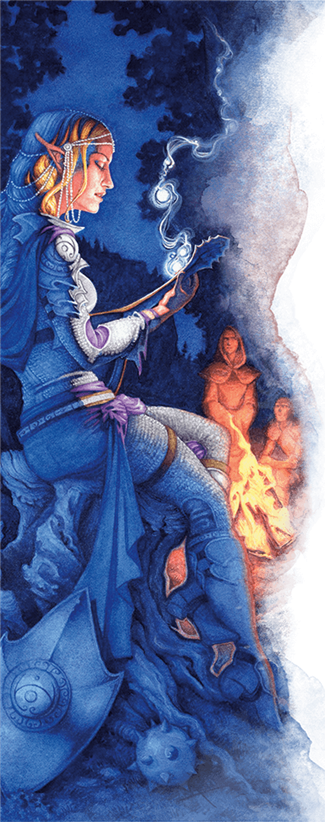 Class is back in session, and now we return to the bard class. This week, it’s time to learn about the College of Valor, a bard that sings songs of heroes of ages past and fights on to create new legends in the present. Like warrior-poets and Viking skalds of old, your verses inspire your comrades towards dizzying heights of glory and martial prowess.
Class is back in session, and now we return to the bard class. This week, it’s time to learn about the College of Valor, a bard that sings songs of heroes of ages past and fights on to create new legends in the present. Like warrior-poets and Viking skalds of old, your verses inspire your comrades towards dizzying heights of glory and martial prowess.
We’ve completed our first full rotation of the twelve classes, and exhausted all the content that the Basic Rules have to offer—as far as classes go, that is. This next wave of the Class 101 series will appraise every subclass within the Player’s Handbook and break down each subclass’s strengths, weaknesses, thematic elements, and everything else a player would want to know before playing that subclass. Because of this, you will need to own the Player’s Handbook (or purchase the subclass a la carte on the Marketplace) in order to make full use of this series.
Check out the other articles in the Bard 101 series, like the broad overview in Bard 101: A Beginner’s Guide to Style and Panache, or the deep dive in Bard 101: College of Lore.
Story of the College of Valor
Leaning against the battlements, the bard surveyed the land below, her fingers absentmindedly stroking the worn wood of the harp cradled in her arms. The same evening breeze that lifted her many braids also brought the acrid tang of smoke to her nose, carried upward from the torches of the massive army encircling the small fortress. Behind the bard, her companions talked quietly as they sharpened their weapons, readied their spells, and prayed to their gods.
The bard could recite dozens of poems and lays about warriors of ages past who had made a heroic last stand against the forces that threatened their homes, but facing the grim reality for herself was a different matter. No song could have prepared me for this, she thought. No grand tale of ages past can convey the true feeling of facing one’s own end. Carefully, with a final caress of the polished wood, she set down the harp at her feet and turned to face her companions, looking at the grim faces that reflected her own heavy heart.
In a single fluid motion, the bard drew her sword from its sheath, her braids flying around her face as the wind grew stronger. “Friends,” she began, “You know our odds don’t bear repeating. But you also know, as well as I do, that if the enemy gets past us here, there will be countless innocent lives lost.”
The paladin nodded and rose to his feet, tightening the straps on his gauntlets.
“I could tell you the tale of the sea elf warrior who fought off a kraken with a single magic spear. I could recite the epic of the queen who died defending her city a thousand years ago and is remembered in story and song even to this day.”
The wizard stood, making a gesture that caused a shimmering layer of protective magic to cover their body, a small smile on their face despite the worry in their eyes.
Raising her voice to carry over the wind, the bard continued. “But this day, this battle—this story is ours now. Whatever the forces that brought us here, our fate is now our own, and the fate of others rests in our hands.”
The cleric moved forward and scowled at the army below, her chin raised high in defiance.
“Today, it’s our turn to be the heroes.” The bard raised her sword high and pointed it at the oncoming army. “Now is the time for us to make our own story—so let’s make it one worth telling!”
College of Valor Features
When bards gather to share stories and develop new verses, they call their gathering a college. That bond of fellowship can be loosely applied to all bards who follow in a similar tradition. Bards who sing songs and tell stories of heroism follow in the footsteps of the archetypal College of Valor. These bards gain several features that make them sturdy combatants and stalwart allies. The bard gains access to four subclass features at 3rd, 6th, and 14th level. You can read all of the College of Valor features in the Player’s Handbook. In summary, your subclass features allow you to:
- Gain proficiency in medium armor, shields, and martial weapons, allowing you to fight on the front lines.
- Inspire your allies in combat, allowing them to spend your Bardic Inspiration dice in the heat of battle.
- Attack more than once per turn, making you a more dangerous fighter.
- Weave martial bravado into your spells, allowing you to make a melee weapon attack when you cast a bard spell.
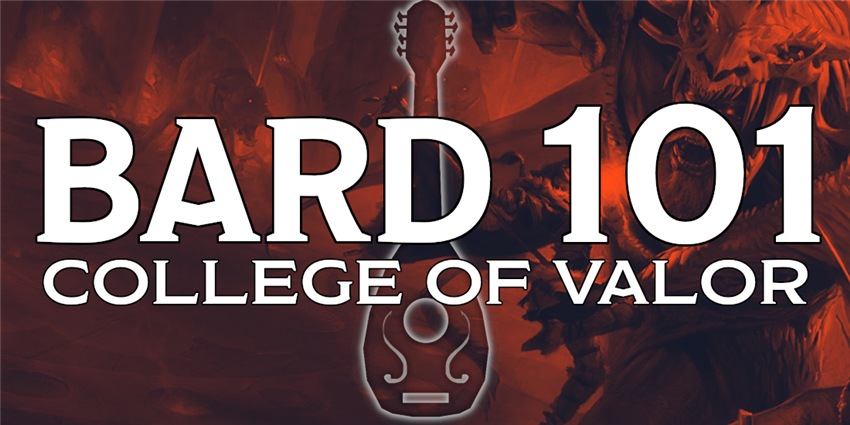
Benefits of the College of Valor
The College of Valor is one of the best and most underappreciated options in the Player’s Handbook for those seeking to play a character who fights with a mix of spells and swordplay. While the bard’s spell list is broadly suited towards social interaction, this can actually be a blessing in disguise. The bard spell list isn’t geared towards combat spells per se, but it still has a few potent offensive spells like dissonant whispers, heat metal, and phantasmal force. (For more on the latter spell, check out Spell Spotlight: Phantasmal Force and Phantasmal Killer.)
And these are just spells that deal damage! The bard spell list is replete with combat-focused options like bane, healing word, and hold person. Just because these spells don’t deal damage doesn’t mean that they can’t aid your party by debuffing enemies or supporting allies in the thick of things. And if you still need more blast to complement your arsenal, you can learn two spells from other classes’ spell lists each time you gain the Magical Secrets class feature at 10th, 14th, and 18th level.
On top of that, the real strength of the bard’s spell list is in its diversity. It’s populated with a broad mix of offensive, defensive, support, and social-oriented spells, allowing bard players to make socially savvy warriors that are just as effective off the battlefield as they are on it. Let your subclass allow you to be a brave warrior, and lean on your class features and spells for the rest of your power.
Drawbacks of the College of Valor
The greatest drawback of being a jack of all trades is being a master of none. Though you can be a potent swordfighter and spellslinger in this subclass, you won’t ever be as powerful (or as well-armored) a warrior as a Champion fighter, nor will your spells be as explosively powerful as a wizard trained in the School of Evocation. What makes a College of Valor bard powerful is the diversity of options available to them. If you aren’t in the mood to play with all of these toys, you may find that your character is less powerful (but not necessarily less fun to play) than characters that are more singularly focused.
You also face the issue of being multi-ability dependent (also known as MAD), as your class relies upon Strength, Dexterity, Constitution, and Charisma as important abilities. Strength lets you use melee weapons effectively, Dexterity improves your Armor Class in medium armor, Constitution helps you endure attacks on the front lines, and Charisma powers your spells. If you want to make use of weapons with the Finesse property like rapiers, you can safely drop your Strength score to bolster the remaining three, but this can still be a tricky proposition. Alternatively, you can invest in the Heavily Armored feat to deck yourself out in heavy armor and safely drop your Dexterity score, but that involves the investment of a feat, which is something similar spellcasting warriors—like paladins—don’t have to do.
The extra feat granted at 1st level by the variant human race might seem like a good way to offset this “feat tax,” so that you can gain the Heavily Armored feat early, without having to sacrifice an Ability Score Improvement, but it doesn’t work by the strict rules of the game. You only gain proficiency with medium armor once you enter this subclass at 3rd level. Since you must be proficient in medium armor to take the Heavily Armored feat, the earliest you can gain it is at 4th level. If you’re playing in a home game, however, you may be able to convince your DM to bend the rules a bit if you’re dead set on playing a College of Valor bard at 3rd level. Your DM may either let you ignore the feat’s prerequisite and have heavy armor proficiency from the start of the game, or to let you choose the Heavily Armored feat at 1st level and then gain its benefit at 3rd level later, once you meet its prerequisite.
Neither option significantly unbalances the game, though you may be hard pressed to find enough gold to purchase heavy armor at 1st level.
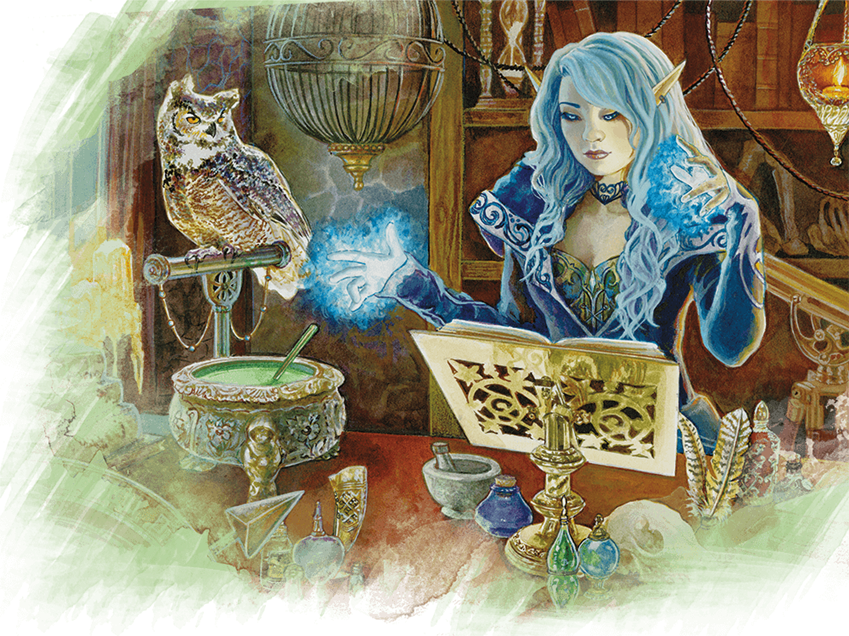
Suggested Build
Like most classes in D&D, the bard doesn’t choose their subclass until 3rd level. If you’re playing a bard from 1st level and think you want to follow the College of Valor later, you should choose a race that improves your Charisma score and either your Strength, Dexterity, or Constitution scores. This includes the dragonborn race, which gives you a large boost to Strength and a minor boost to Charisma, the half-elf race, which gives you a large bonus to Charisma and two small bonuses that you can allocate wherever you wish, and the tiefling race, especially if your DM allows the alternative tiefling subraces presented in Mordenkainen’s Tome of Foes. A tiefling connected to the power of Zariel or of Dispater or Glasya could be a potent College of Valor bard.
As usual, your character’s background is up to you. You can come up with all sorts of interesting stories and oddball characters by pairing unlikely backgrounds with your class. Have you been a traveling Entertainer since birth? Or were you a Soldier that took up playing the drum and the fife while on a military campaign and found your true calling?
As a College of Valor bard, you should choose EQUIPMENT instead of GOLD while creating your character. Unfortunately, since you don’t gain proficiency with martial weapons and medium armor until you gain this subclass at 3rd level, it won’t do you any good to choose GOLD and purchase those more specialized pieces of equipment now. You’ll have to do a bit of shopping (or scavenging) later.
Spells
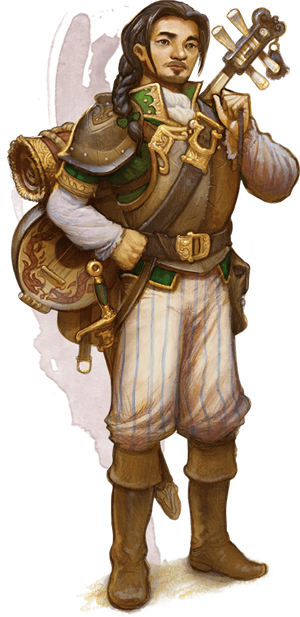 When you choose your spells at 1st level, you'll be getting the hang of what role you want your bard to play in your party. Unlike some other spellcasting classes, once a bard learns a spell, they know that spell forever. You can "trade out" one known spell for another spell on your spell list when you gain a level, but that's it. You want to have a little bit of everything, and you can pick two cantrips and four 1st-level spells as a 1st-level bard. From there on out, you learn one new bard spell every time you level up (more or less), and can also trade one known spell out, as mentioned above. And that's not even considering the spells a College of Valor bard will ultimately gain from your Magical Secrets features. That's a ton of spells, so don't fret too much over the decision.
When you choose your spells at 1st level, you'll be getting the hang of what role you want your bard to play in your party. Unlike some other spellcasting classes, once a bard learns a spell, they know that spell forever. You can "trade out" one known spell for another spell on your spell list when you gain a level, but that's it. You want to have a little bit of everything, and you can pick two cantrips and four 1st-level spells as a 1st-level bard. From there on out, you learn one new bard spell every time you level up (more or less), and can also trade one known spell out, as mentioned above. And that's not even considering the spells a College of Valor bard will ultimately gain from your Magical Secrets features. That's a ton of spells, so don't fret too much over the decision.
Since you want a smattering of everything, choose any two cantrips you like (one of them should probably be vicious mockery, since it's so iconic), and four spells from the suggested list below. Try to choose one spell labeled OFFENSE, one spell labeled SUPPORT, one labeled DEFENSE, one labeled SOCIAL, and one more of your preference. Note that this list only includes some spells from the Player's Handbook, so if you want to choose more unusual spells, or have other sources like Xanathar's Guide to Everything, you'll have to do a little self-directed research. This list is just here to get you started if this is your first time playing a College of Valor bard.
- Bane (DEFENSE)
- Charm Person (SOCIAL)
- Cure Wounds (SUPPORT)
- Disguise Self (SOCIAL)
- Dissonant Whispers (OFFENSE)
- Faerie Fire (SUPPORT)
- Tasha’s Hideous Laughter (DEFENSE)
- Silent Image (SOCIAL)
- Sleep (DEFENSE)
- Thunderwave (OFFENSE)
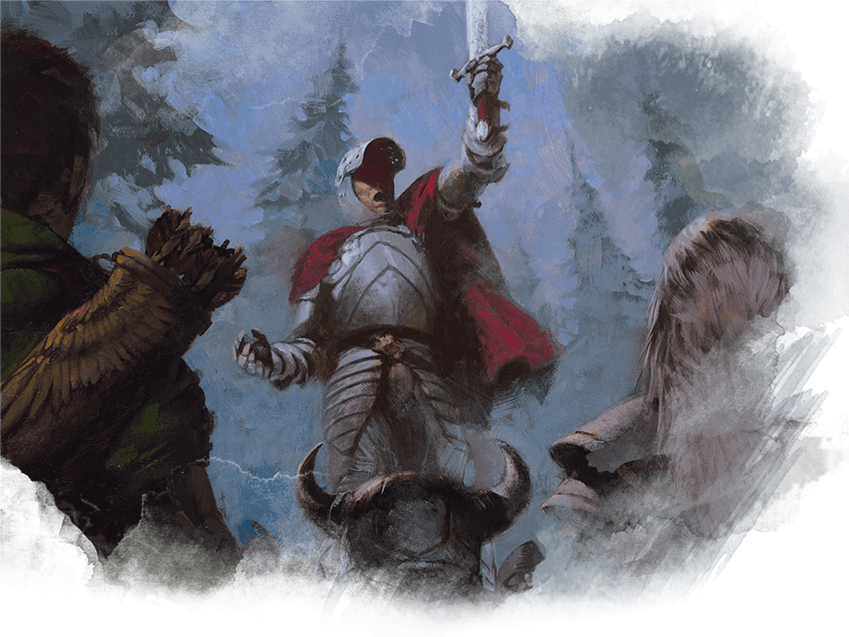
Feats
Once you’ve gained an 18 or a 20 in your Strength, Dexterity, or Charisma scores, you can increase your offensive or defensive power with a few incredible feats. The following feats are good picks for College of Valor bards:
Great Weapon Master. If you’ve invested in your Strength score over Dexterity and want to wield huge weapons on the front lines, this feat is for you.
Heavily Armored. If you want to focus on front-line fighting and you’ve invested in your Strength score enough to heft heavy armor, the Heavily Armored feat will get you the armor proficiency you desire. Getting into heavy armor and fighting on the front lines gives you the best of all worlds: the physical offense and defense of a fighter and the incredible spellcasting power of a wizard.
Inspiring Leader. This feat is a perfect fit for a valorous bard, especially if you’ve wound up as the de facto leader of your party.
Mage Slayer. If you find yourself facing a lot of spellcasters in your campaign, this feat synergizes well with your other combat abilities.
Resilient. Gaining proficiency in Constitution saving throws is excellent, especially since you gain a +1 bonus to Constitution, too! You might want to choose this or War Caster, but both are great.
War Caster. If you’re going to be on the front lines, you’re going to want this feat. Advantage on saves to maintain concentration is amazing; the rest is just gravy.
If you want more advice for building a bard, check out Bard 101. Have you ever played a College of Valor bard? What advice would you give to players that want to play this subclass?
 James Haeck is the lead writer for D&D Beyond, the co-author of Waterdeep: Dragon Heist and the Critical Role Tal'Dorei Campaign Setting, a member of the Guild Adepts, and a freelance writer for Wizards of the Coast, the D&D Adventurers League, and other RPG companies. He lives in Seattle, Washington with his fiancée Hannah and their animal companions Mei and Marzipan. You can find him wasting time on Twitter at @jamesjhaeck.
James Haeck is the lead writer for D&D Beyond, the co-author of Waterdeep: Dragon Heist and the Critical Role Tal'Dorei Campaign Setting, a member of the Guild Adepts, and a freelance writer for Wizards of the Coast, the D&D Adventurers League, and other RPG companies. He lives in Seattle, Washington with his fiancée Hannah and their animal companions Mei and Marzipan. You can find him wasting time on Twitter at @jamesjhaeck.








-
View User Profile
-
Send Message
Posted Sep 27, 2019Everyone tends to be up the butt of Swords bard, with their fancy flourishes and additional damage opportunities, but honestly? My favorite 'Warrior' bard has always been Valor. Being able to turn a bardic inspiration into an AC boost can save lives and turn a crushing blow from a heavy attacker into a narrow miss, keeping somebody on the field. Valor bards get better proficiencies, gaining shields and all martial weapons over just medium armor and scimitars from sword bards, and Battle Magic lets you cast debilitating spells like Hold Critter or Synaptic Static, then follow up with a mighty swipe from your enchanted battleaxe. Or use Green Flame/Booming Blade to deal heavy cantrip damage with a follow-up smack to drive the point home.
Valor bards are great, a good way to change up the whole Horny Dandyman formula, and absolutely worth considering over Sword bards. Especially in their Heavily Armored variation, wielding heavy weapons and full arcane casting seamlessly.
-
View User Profile
-
Send Message
Posted Sep 27, 2019If you're going to play a bard that gets into melee combat regularly, you might want Thunderclap as one of your cantrips.
I love playing a bard, but the major problem college of Valor runs into is that few of your (sub)class features do much to make you more effective (or hardy) in combat, and the number of bard spells that do the same are incredibly lacking. It's a great concept for a warrior bard, but the options for being very effective at it are very limited. Which is probably how the College of Swords came about.
-
View User Profile
-
Send Message
Posted Sep 27, 2019Actually if you want to go the heavy armored route and don't want to take the bonus feat as a human to get the heavy armor bonus, Mountain Dwarves are a great substitute. They inately have proficiency in light and medium armor, give a big boost in both strength and constitution (+2 on both) to help with survivability and damage, and page 126 of the PHB states that if you get the same proficiency from 2 different sources, you can choose another of the same type. So at first level, since bards get proficiency with light armor, you can switch that out for heavy armor proficiency, and be able to wear heavy armor the moment you start the game. Which also means you don't have to rely on dex as much for armor or weapons.
Downside though, your charisma might not be as good as it could be, so some of your debuff skills are a little easier to shake off, you still need to rely on 3 stats to be both support and frontline, and your initiative is probably going to be a little low to begin with, but will get better as you level up. Your Jack-of-all Trades feature effects your initiative bonus as well so you will get to add half your proficiency to it.
I would also avoid taking resilient over war caster at all with this build. Warcaster gives you everything you are looking for from resilient, plus added benefits of letting you cast spells while on the frontline. The +1 from resilient isn't worth it when you get the +2 from just being a dwarf. I would instead take Sentinel to help with the defense of your party members. And if you instead want to go the Sword and Shield option instead of the two-handed weapons, I would go with the Shield Master feat. It is so underrated, but such a good option for frontline sword and shield bards. You get defense against some of the heaviest hitting spells, an option to knock your enemy prone making them easier for you to hit in melee, and if you already plan on using a shield, it is a must take in my opinion.
-
View User Profile
-
Send Message
Posted Sep 27, 2019If you do go Valor Bard when you get Magical secrets you can pick up some nice Paladin Smites and get the high level ones usually reserved for 17th level paladins even when you're just 10th which can be a great combo!
-
View User Profile
-
Send Message
Posted Sep 27, 2019"If a character would gain the same proficiency from two different sources, he or she can choose a different proficiency of the same kind (skill or tool) instead."
Armor proficiency is neither a skill nor a tool proficiency, so none of this would actually be possible RAW.
-
View User Profile
-
Send Message
Posted Sep 27, 2019I'm surprised medium armor master wasn't suggested. If you go sword and board with a valor bard, using dex is perfectly fine as a rapier will deal the same damage as a longsword used the same way. MAM makes your half plate equivalent to full and let you ignore stealth disadvantage, making the dex build that much more attractive.
-
View User Profile
-
Send Message
Posted Sep 27, 2019In one of the previous games I ran, one of our players was playing a dragonborn bard, and the player was one of the most laid back people I've ever played with. They took the college of valor, and I let them use their speeches and singing as a spellcasting focus, provided that they actually sing in real life. It was crazy fun to watch them give these rousing pep talks, then be totally chill about saving the part from certain destruction. For anyone wanting to play a valor bard, one thing I would suggest is either going the CHA-DEX-CON or CHA-DEX-STR routes. Trying to juggle four ability scores generally makes for a frustrating character, so you should either play a tank who buffs the allies (CHA-DEX-CON) or a shock attacker who does a lot of damage at once, then gets out (CHA-DEX-STR).
-
View User Profile
-
Send Message
Posted Sep 27, 2019Not a bad rundown of the subclass. I do have to admit, I also find it surprising that when reading forum discussions about gish characters, I see Hexblades, Eldritch Knights and Bladesingers mentioned all the time, but rarely Valor Bards. Why the bias? They're not the IDEAL gish, but then, none of those really are, so....
Edit: yeah, even Sword Bards seem to get more attention.
-
View User Profile
-
Send Message
Posted Sep 27, 2019I like the character concepts that a martial bard gives. The first thing that comes to mind is the Norse Skald or a guitarist from a heavy metal band with his axe
-
View User Profile
-
Send Message
Posted Sep 27, 2019That section from my PHB (and the D&D Beyond site) seems to say that this only applies to skill and tool proficiencies. I'm pretty sure armor doesn't count as a tool. Let's just say that not every DM will let you do that.
-
View User Profile
-
Send Message
Posted Sep 27, 2019This. I have been playing a Norse themed Spear and Shield Valor Bard who grabbed Find Greater Steed and Destructive Wave for Magical Secrets at 10.
She's the best pretend Paladin.
-
View User Profile
-
Send Message
Posted Sep 27, 2019It doesn't work that way. You only get to pick a proficiency with a skill, or tool, if your background gives you proficiency with a skill, or tool, you already have proficiency with. It does not work with armor or weapon proficiencies, and it does not cover Feats or Racial proficiencies.
-
View User Profile
-
Send Message
Posted Sep 27, 2019So. When I played Valor Bard (half-drow via SCAG option, entertainer background), I didn't bother with Strength at all. In fact, I completely dumped it and ended up with Dex 16, Cha 16, and . This way, I could skirmish with a rapier instead of a greatsword, but could also fall back and pull out my longbow. Dexterity also let me use the numerous dex-skills, which were handy to have. If I cast a spell with Concentration, I stepped out of melee and relied on my bow.
When it came to spells, I didn't bother with any attack cantrips - that's why I had a sword and bow. Instead, I worked out Dancing Lights (great for scouting or long range targets as well as performances), Minor Illusion and Prestigitation. For beginning spells, I went with Healing Word (Valor bard tend to have their bonus action free, or using Inspiration. This helps fill in the times I'm not Inspiring) and Dissonant Whispers (provokes enemy AoO!). At second level, I immediately nabbed Blur - while its no Mirror Image, its still a great defense for those times I'm in melee and need to off-tank. As the main healer of the group (we had a Fighter, Ranger, and dragon Sorcerer), I had to invest quite a few spells as we leveled into healing options, so that meant things like Lesser Restoration, etc. I also nabbed things like Suggestion and Hypnotic Pattern. The fun really came, though, when I hit that first Magical Secrets. At level 10, you nab Swift Quiver and a Smite spell. Suddenly, the Valor Bard got very scary, very fast. I was strongly debating between that, and Fire Shield and Mirror Image / Blur. Very awesome abilities.
The Valor Bard is the ultimate Jack of All Trades option. So, I like focusing on making the most out of that flexibility. Being able to switch between sword, bow, healing or crowd control at a moments notice is pretty awesome. I won't be as strong as someone swinging around a greatsword, but then, if I wanted to be a bard of stabby death, that's what the Sword Bard is for.
-
View User Profile
-
Send Message
Posted Sep 28, 2019Valor Bard is literally William Wallace.
-
View User Profile
-
Send Message
Posted Sep 28, 2019Not just the smites! High level paladins and rangers have a tone of crazy options -- steel wind strike, destructive wave, Wrath of Nature, and Circle of Power are all great.
-
View User Profile
-
Send Message
Posted Sep 28, 2019I've always thought Valor Bards are the ultimate gunslinger/rifleman.
Crossbow Expert. At level 6, shoots twice with Heavy Crossbow. Three times with a single Hand Crossbow per turn.
Four times with a Heavy Crossbow if your first magical secrets is Swift Quiver.
-
View User Profile
-
Send Message
Posted Sep 28, 2019On the subject of MAD and whether you want to use Strength or Dexterity for your attacks, it's worth mentioning the option of choosing shillelagh as a Magical Secret. That lets you use Charisma for your melee weapon attacks, so you don't have to worry as much about Strength or Dexterity. You can't outright dump both of them unless you're a dwarf with heavy armor proficiency, but you can easily get away with something like Strength 10, Dexterity 14 and half plate.
On the other hand, I'd argue against taking vicious mockery as a Valor bard. Damaging cantrips are what a spellcaster uses when they're not good at weapons. Valor bards are good at weapons, and will do far more damage than even fire bolt with a proper weapon attack. It's kind of nice to have a damaging cantrip up one's sleeve, but when you only get to choose so many cantrips known, you have to consider the frequency of situations where it would be better than just swinging a sword or firing a bow. On the other hand, thunderclap is more useful than a sword in certain situations (e.g. when you're surrounded by minions), so it might be a good investment.
-
View User Profile
-
Send Message
Posted Sep 28, 2019Valor bards don't get Magical Secrets until level 10 though, which is a bit late in most games to build your character around.
Now, if you play a lore bard you can get Shillelagh at level 6, and use a feat to learn Booming Blade...
-
View User Profile
-
Send Message
Posted Sep 28, 2019I will love to read the first 12 class run downs you mention in the second paragraph. Except, they're impossible to find on DNDBeyond. Do you have a like to these??
-
View User Profile
-
Send Message
Posted Sep 28, 2019I think Valor is the best option for a ranged-based bard, wielding a longbow. Keeps you out of melee and let's you dump Strength for Dexterity. You can even neglect Con a little. And none of your abilities require you to use melee weapons. And stealing those ranger spells when Magical Secrets kick in makes you even better.